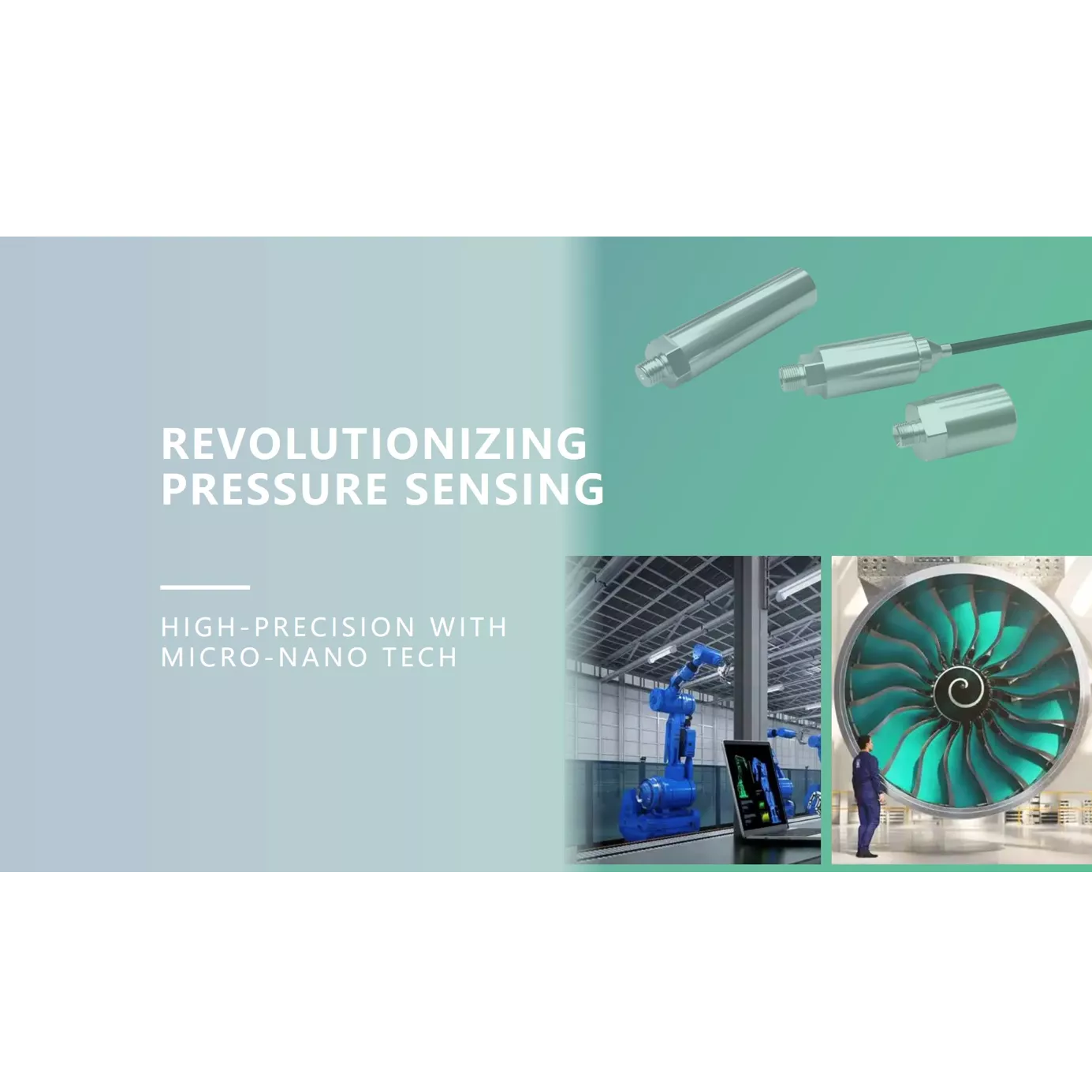Views: 6 Author: Site Editor Publish Time: 2025-02-18 Origin: Site












Silicon Resonant Pressure Sensor: The High - precision Pressure Sensing Revolution Driven by Micro - nano Technology
As a disruptive technology in the field of pressure measurement, the silicon resonant pressure sensor is reshaping the industrial measurement and control system with astonishing accuracy and stability. This precision sensor, based on Micro - Electro - Mechanical System (MEMS) technology, perfectly integrates the principle of mechanical resonance with semiconductor processes, demonstrating irreplaceable technical advantages in high - end fields such as aerospace, energy and chemical engineering, and biomedicine.
The core mechanism of the silicon resonant pressure sensor is based on the coupling relationship between the resonant frequency and stress. The sensor features a resonant beam structure made of single - crystal silicon material, which continuously vibrates at a specific frequency within a vacuum chamber. When external pressure acts on the sensor diaphragm, the mechanical stress causes a change in the stiffness of the resonant beam, resulting in a drift of its natural frequency. This frequency change has a strict corresponding relationship with the applied pressure. By precisely detecting the frequency offset through a circuit, the pressure value can be inversely deduced.
The typical structure consists of three core modules:
Pressure - sensitive diaphragm: A silicon thin - film with a diameter of 3 - 8 mm that converts pressure signals into mechanical stress.
Resonant oscillator: An H - shaped silicon beam with a thickness of only 20 - 50 μm, operating at a frequency range of 10 - 100 kHz.
Closed - loop excitation system: Integrates a piezoresistive excitation coil and a frequency detection circuit to maintain a stable resonant state.
Compared with traditional piezoresistive sensors, silicon resonant technology has achieved a quantitative leap in performance:
Performance | Silicon resonant sensor | Traditional Piezoresistive Sensors |
Measurement accuracy | 0.01% F S | 0.1% F S |
Long term stability | ±0.02%/year | ±0.1% |
Temperature coefficient | <5ppm/℃ | 50-100ppm/℃ |
Response time | <1 ms | 10-50ms |
Overload capacity | 300% F S | 150% F S |
Its unique advantages stem from three major innovations:
1.Frequency output characteristic: The anti - interference ability of the digital frequency signal is two orders of magnitude higher than that of the analog voltage output.
2.Stress isolation design: A differential structure with double resonant beams is adopted, and the temperature drift compensation efficiency reaches over 98%.
3.Quantum - level processing: The control precision of the Deep Reactive Ion Etching (DRIE) process reaches ±0.1 μm.
Frontier research focuses on four major breakthroughs:
1.Wide - temperature - range technology: By using a SiC - on - Insulator substrate, the operating temperature range is extended to - 200°C to 600°C.
2.Multi - dimensional sensing: A 3D resonant grid structure is developed to simultaneously measure parameters such as pressure, temperature, and flow rate.
3.Photonic resonance: An optomechanical coupling system is introduced to achieve a frequency stability of the order of 10^ - 6 Hz.
4.Self - powered system: A piezoelectric energy harvesting module is integrated to construct a passive Internet of Things (IoT) node.
In the monitoring of aero - engines, silicon resonant sensors can withstand the dynamic pressure detection of high - temperature gas at 2000°C. They still maintain an accuracy of 0.05% at a sampling frequency of 1 MHz. In deep - sea oil and gas fields, sensors encapsulated with titanium alloy can work continuously for 5 years at a depth of 6000 meters, with an accuracy attenuation of no more than 0.03%.
In the medical field, an implantable blood pressure monitoring system has emerged. A 3mm×3mm sensor chip is directly integrated on a cardiovascular stent, enabling continuous 365 - day blood pressure waveform monitoring through a radio - frequency link with a power consumption of less than 10μW. In the context of Industry 4.0, sensor networks can capture micro - pressure fluctuations of the order of 0.1 Pa in real - time and provide early warnings of pipeline leakage risks 48 hours in advance.
In the field of environmental monitoring, distributed sensor networks can construct an atmospheric pressure field with a resolution of 0.5 km, providing minute - by - minute updated data for typhoon path prediction. The automotive industry is on the verge of transformation. The next - generation intelligent tires will be embedded with 32 resonant sensors to sense the tire pressure distribution in real - time, advancing the tire - burst warning by 30 minutes.
Conclusion
This precision sensing technology originating from the semiconductor industry is redefining the digital boundaries of the physical world. When mechanical vibrations and electronic signals resonate perfectly at the micro - scale, human understanding of the essence of pressure has entered an era of quantum precision.